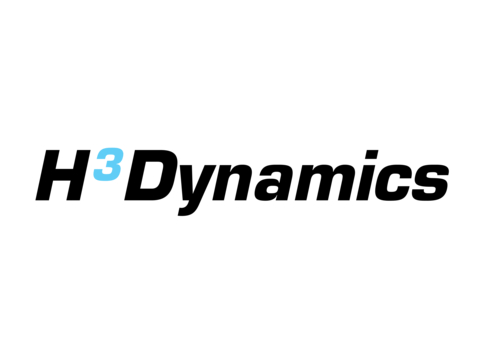H3 Dynamics Completes World’s First Flight With Proprietary Distributed Hydrogen-Electric Nacelle Technology
H3 Dynamics Completes World’s First Flight With Proprietary Distributed Hydrogen-Electric Nacelle Technology
- Propulsor nacelles under the wings free-up fuselage for passengers & cargo
- Immediate markets include eVTOL, Airships & Fixed Wing UAVs
- Next step is to scale-up the power level for a 2-4 passenger aircraft by end of 2023
TOULOUSE, France--(BUSINESS WIRE)--The future of hydrogen aviation powered by H3 Dynamics’ distributed hydrogen propulsion nacelles has taken flight for the very first time in France.
Following the announcement of its hydrogen aviation concept back in 2018, H3 Dynamics managed to become a topic at an Oval Office press conference on the very next day, and started what is now a global hydrogen aviation movement.
In November 2021, H3 Dynamics completed its first working hydrogen propulsion nacelle prototype. In July 2022, the first distributed pod system took to the skies on a scaled-down aircraft at “Hub Drones - Systematic” airfield near Paris. The hydrogen flight received clearance from the French civil air authorities (DGAC).
H3 Dynamics’ self-contained nacelle approach addresses technical, safety and cost challenges hydrogen aircraft developers could face at some point in the future. It achieves this by placing hydrogen and smaller fuel cells across a series of collaborative propulsion nacelles under the wings. A new 2022 study forecasts the global thrust nacelle market to reach $7 Billion by 2030 highlights H3 Dynamics’ hydrogen solution as a key new opportunity in the sector.
Other, higher-visibility hydrogen aircraft proponents will fly larger size aircraft much sooner – but they will do so by converting existing aircraft using fuel cells sourced from the automotive world – and storing large amounts of gas or liquid hydrogen inside the main fuselage.
“Not only is safety our first priority, but we don’t want hydrogen competing for revenue-generating airfreight and passenger space,” said Taras Wankewycz, Founder/CEO of H3 Dynamics. Distributing small systems solves technical headaches, such as thermal management, and increases safety through multiple redundancy.
H3 Dynamics’ 25kg test aircraft is already a breakthrough - with an electric flight range of up to 900km on liquid hydrogen, or 350km with pressurized hydrogen. Its externalized nacelle design also frees up 30L of fuselage volume with no hydrogen nor any powertrain elements inside. H3 Dynamics’ hydrogen propulsion nacelles could potentially become a “snap-on” retrofit for battery-powered unmanned eVTOL or fixed wing cargo drones.
Preparing for the arrival of much longer duration unmanned hydrogen flights - H3 Dynamics started to work on airspace safety with world-leading air traffic control companies. It has been building experience with high-volume enterprise data services being deployed in smart cities such as Singapore, and gradually coupling these with drone-agnostic charging stations.
By starting at the lower-end boundary of regulatory and certification efforts, H3 Dynamics doesn’t need to wait until 2035 to begin its commercial journey. “We all need to learn today with small commercial applications and gradually increase aircraft size over time together with all stakeholders – most importantly, the regulators.”
Now H3 Dynamics is already preparing its next steps.
It is exploring liquid hydrogen integration as part of a joint-development with ISAE-SUPAERO in Toulouse launched in 2019. The objective is a historical and symbolic Atlantic crossing on hydrogen electric propulsion in the coming two years.
And with airfield experiments feeding its digital twin capability for hydrogen aircraft design, H3 Dynamics is now working on a next generation platform powered by 6 independent hydrogen-electric nacelle systems. The aircraft will feature fast-refueling and will be used as a test bed for H3 Dynamics hydrogen-electric propulsion technology moving forward.
About H3 Dynamics: www.h3dynamics.com
H3 Dynamics is on a long-term mission to decarbonize aviation with a unique technology solution around distributed hydrogen-electric propulsion, as well as ground refueling solutions. While the commercial opportunities around passenger-scale hydrogen aviation continue to mature, the company is implementing an incremental product and services roadmap that solves safety, technical, regulatory challenges starting small and simple, adding scale and complexity over time. The company currently has 95 employees and serves clients globally from its 3 regional headquarters in Toulouse, Austin and Singapore. H3 Dynamics is member of the Alliance for Zero Emission Aviation under the European Commission, the Lufthansa Cleantech Hub, Paris Advanced Air Mobility Alliance, and Aerospace Valley in Toulouse.
Contacts
Taras Wankewycz
CEO, H3 Dynamics
taras@h3dynamics.com
